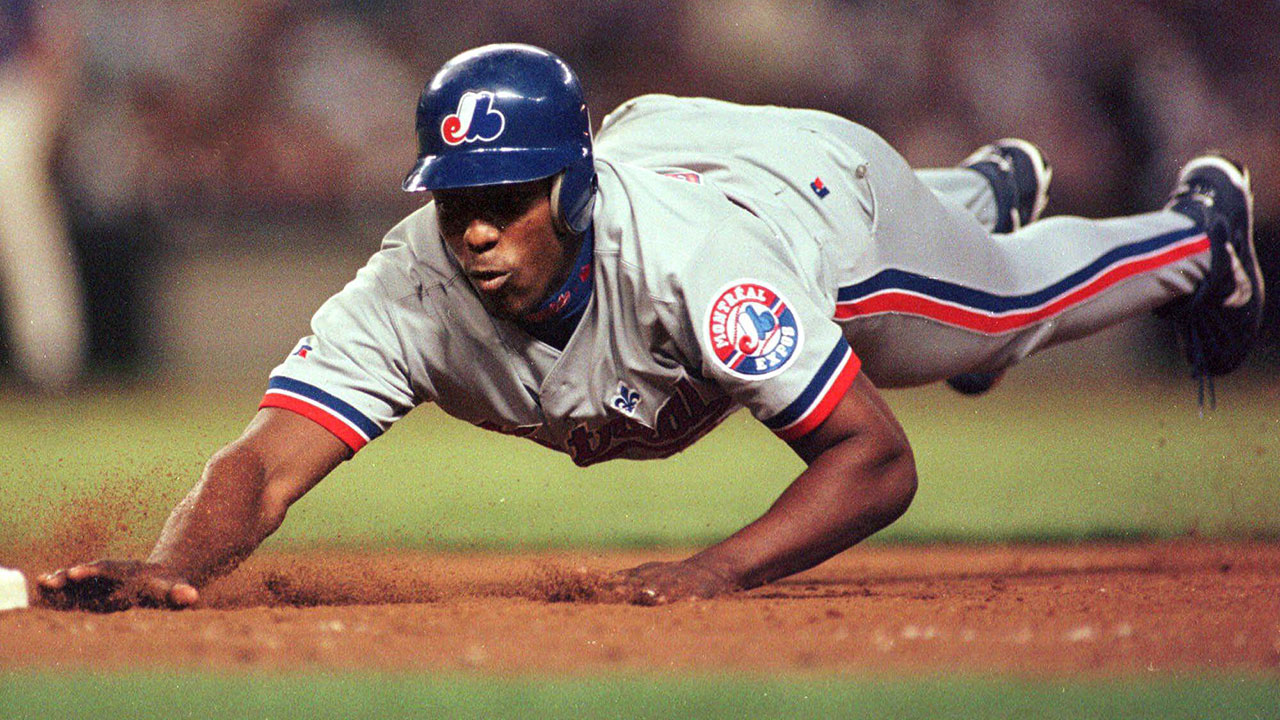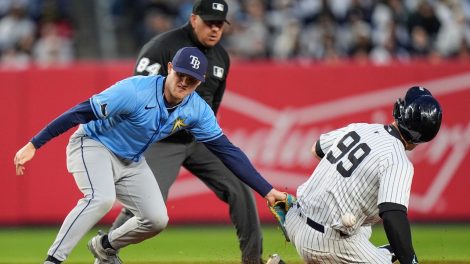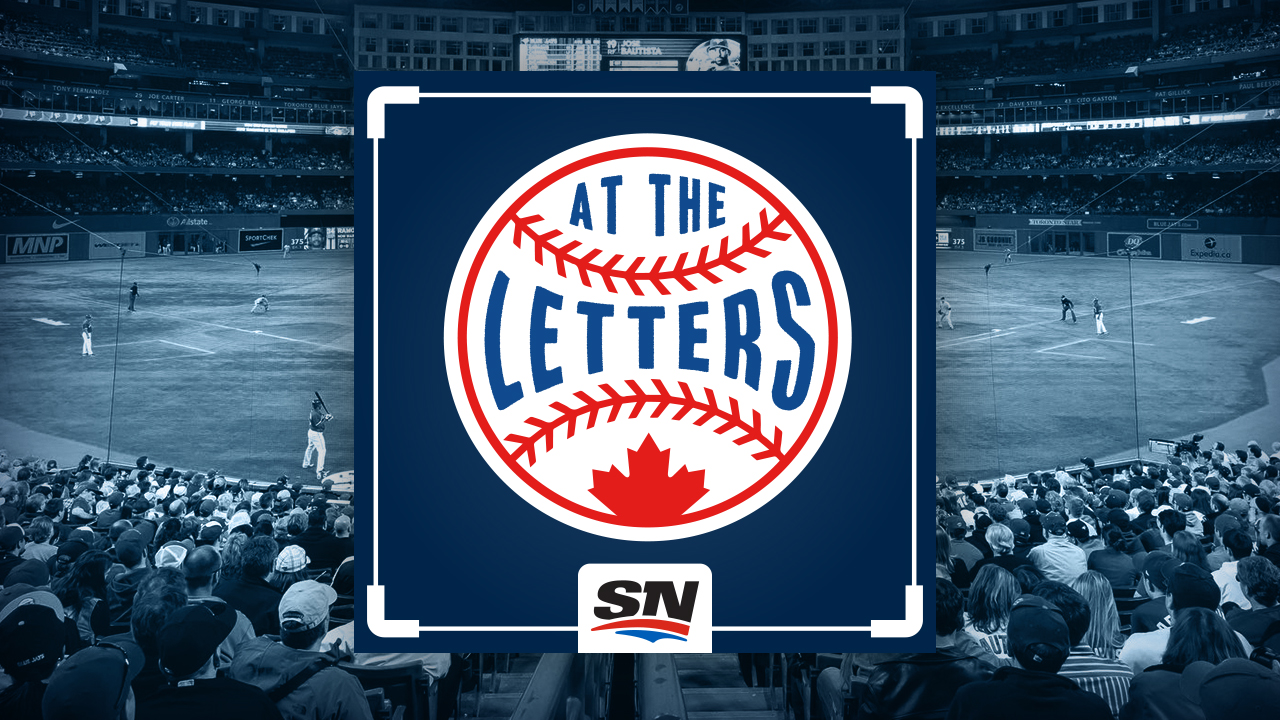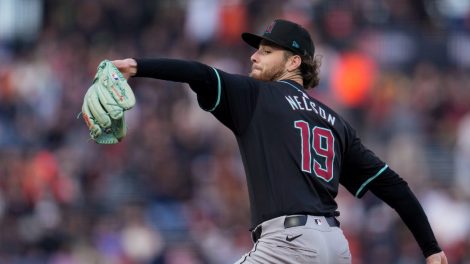TORONTO – St. Marys calls for him this weekend. Cooperstown won’t be far behind. Vladimir Guerrero will be inducted into the Canadian Baseball Hall of Fame Saturday, justly feted these days for his career, but memories are still vivid of the way he arrived in the major-leagues a gilt-edged yet unadorned prodigy.
No earrings, words, tattoos or batting gloves – hell, Vladdy didn’t even need his own bat to hit bomb after bomb after bomb. Yours would do just fine.
“He was like a wild stallion,” Guerrero’s former teammate F.P. Santangelo, now the colour analyst on MASN’s Washington Nationals telecasts, said Friday. “I mean, sometimes he’d just grab any bat out of the bat rack, look and nod at you if it was yours, and it was: ‘Yep, Vladdy. OK.’ Seriously, man. Any bat. Didn’t matter to him.”
Here’s an interesting bar-room debate: who is the best-loved position player in the history of the Montreal Expos and Toronto Blue Jays? Andre Dawson, Gary Carter, Tim Raines and Roberto Alomar are all in the Hall of Fame; Joe Carter has his signature moment; Carlos Delgado the offensive numbers and classy demeanour and Larry Walker the passport. Moises Alou could do stuff that shocked you and – wow – don’t even get us started on Joey Bats and EE and J.D.
But there was something about Vladdy, whether it was the story of how the Expos signed him for a pittance out of an impoverished childhood in the Dominican Republic, the way he just kind of emerged from the cornfields of the minor-leagues and only spoke English to his teammates whenever he did speak, which was infrequent (“he sees me now, we hug, he smiles … that’s about it,” said Santangelo) or how he eventually became the face of a much put-upon franchise.
[relatedlinks]
There is a mystery to Guerrero, always has been. Pre-internet days, word of mouth or Baseball America were the only ways to keep up with Guerrero; a trip to Harrisburg, the Expos’ double-A affiliate, the only way to see first-hand the guy who was hitting doubles off the wall or home runs over the wall on pitches that bounced in front of the plate. And if you thought the exuberant reaction of Blue Jays social media to news that Guerrero was attempting a one-in-a-million comeback with the team in spring training a few years back was telling, it was nothing compared to the reaction when Vladimir Jr. was signed by the organization.
The frenzy associated with his progress gets frightening at times. His old man laboured in anonymity, by comparison.
But Vladdy, Sr.’s future teammates knew.
“First time I remember hearing about a kid in the Gulf Coast League,” said Santangelo, who laboured in the Expos’ minor-league system for six years before getting his break in 1995. He kept hearing about Guerrero, who would need all of 119 games at double-A before leaping into the majors for good, bypassing triple-A.
“Not even high-A, the Gulf Coast League,” Santangelo continued. “I mean, that just never happened then.”
Added Cliff Floyd, another teammate turned broadcaster whose experience as a highly-touted 14th overall pick out of high school is different from that of both Guerrero and Santangelo: “The one thing you heard the most was: ‘Just wait … just wait until you see this,’” said Floyd. “Then Vladdy finally gets there, and you’re like: ‘Geez, where did you come from?’”
Guerrero hit .323 in 1,004 games with the Expos, with 234 home runs, 702 runs batted in and an OPS of .978. He signed as a free-agent with the Los Angeles Angels of Anaheim in 2004 and went on to win the American League MVP, coming within 15 votes this past January of being a first ballot Hall of Fame selection. Guerrero finished four percentage points shy of the 75 per cent threshold needed for admission. He will likely get it in the next round of balloting.
Guerrero’s career numbers are remarkable: a .318 career average with 449 home runs and an OPS of .931 and while it was with the Angels that he enjoyed much of his success, his eight years with the Expos had the whiff of history: his 29.7 WAR over a span of five seasons (1998-2002) was seventh-best and he holds the combined Expos/Nationals franchise career records for average (.323), slugging percentage (.588) and OPS (.978). His single-season franchise marks include slugging (.664 in 2000), total bases (379 in 2000) and runs batted in (131 in 1999) – all figures that have withstood the assault of Bryce Harper.
Santangelo was asked the obvious question: How would he compare Harper, who he has seen as a broadcaster, to Guerrero?
“The whole world knew about Bryce before he got here,” said Santangelo. “Some of us might have heard of him, but the world didn’t know about Vladdy until he got here. Bryce was a polished player when he got here; Vladdy … know what? He might have had more talent.”
[snippet id=3305549]
Not often mentioned about Vladdy’s arrival in September, 1996: as expected as it was, the manner in which then-Expos manager Felipe Alou carried it out was the subject of some bitterness in the clubhouse. The Expos were five games back of the Atlanta Braves heading into a series between the teams and firmly positioned in the wild-card hunt having won six of their last seven games heading into a Sept. 19 game. Guerrero was put into the lineup in the sixth spot and in right field, effectively benching Henry Rodriguez who was on a .394 tear leading into the game.
The Expos would go on to lose seven of their last 10 games and be eliminated from the post-season on the second-last day of the regular season. Guerrero went 5-for-27 down the stretch. Rodriguez – who finished with 39 homers and 103 RBIs while leading the NL with 130 strikeouts – lost at bats while Moises Alou and Rondell White hit below their season averages, as Felipe Alou juggled his order and tried to balance out at bats.
“It was 1996, we were in Atlanta and you know Felipe: a kid gets called up, he was called up to play, not sit on the bench,” said Santangelo. “It didn’t go over well in the clubhouse, I can tell you that.”
And, candidly, Santangelo admitted that he and some of the other Expos players wondered about Guerrero next season, as well, when he fouled a pitch off his foot in the final days of spring training after winning the starting right-field job, and didn’t make an appearance in a big-league game until May 3, 1997.
Guerrero was so raw and at times out of control – he led all MLB outfielders in errors for five consecutive seasons, starting with 12 in his 90-game rookie season – that he was a magnet for aches and pains, especially given the unforgiving, ligament and tissue-annihilating artificial turf at Montreal’s Olympic Stadium.
“There was some of ‘hey, Vladdy’s hurt again,’ in that clubhouse,’” said Santangelo. “But I think we all realized pretty quickly that it was just a matter of him needing to learn how to play with pain. I mean, we all went through it; we all learned the injuries we could play through without hurting the team and the ones we just couldn’t play through. The only way you find that out is to test it. Once Vladdy figured that out … he grew up quickly.”
He never needed to figure out hitting. Longtime Angels hitting coach Mickey Hatcher compared Guerrero’s ability to make contact with bad pitches to that of a tennis player returning shots. “Seriously, he might as well be up there with a racquet instead of a bat,” said Hatcher. Floyd said he’d only seen one other player give pitchers as many headaches: Hall of Famer Tony Gwynn. Funny enough, that was the exact same comparison made by Santangelo.
“He was not Tony Gwynn, but you had to pitch him like he was,” said Floyd. “Throw it down the damn middle; let him pop up to the infield with an overswing.”
Santangelo chuckled.
“What a luxury that must have been,” he said. “To just go up to the plate with no game-plan at all at the highest level and just rake.”
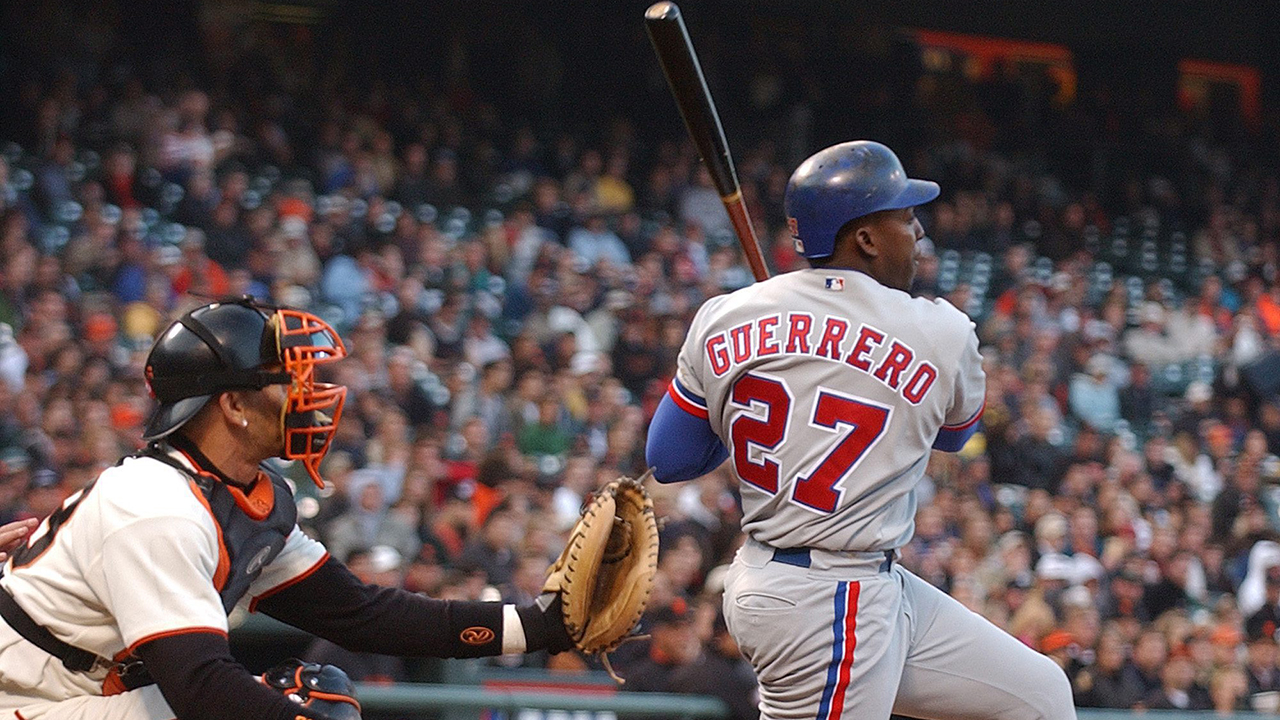
Both Santangelo and Floyd say that the presence of Felipe Alou in the manager’s office was vital to Guerrero’s success. Santangelo wonders if Vladdy happens at all without Alou.
“Felipe was everything, right?” Santangelo remarked. “He was the best manager there was back then. I mean, some managers could manage the bullpen … or manage a game … or manage personalities, but Felipe could do all that and teach. You just don’t come across people who can teach in the majors, not just about being a man or a person but about teaching the game of baseball.
“We all needed it. Vlad as much as anybody and I’ve always kind of wondered … can you imagine if Vladimir’s first manager was a guy who couldn’t speak Spanish?”
Not every manager thought Vladdy was the best player or best hitter he’d managed, however. In the spring of 2004, the first after Guerrero had left the Expos for the Angels, then-Expos manager Frank Robinson was holding court. The topic was life after Vladdy, and at one point somebody – OK, me – asked Robinson where he’d rank Guerrero among all the hitters he’d managed. There followed a prolonged silence.
“Would he be near the top?” I asked. More silence – the buildup, no doubt, to the nugget that would make that day’s article pure gold. Surely, this man – one of the greatest hitters of his generation … surely he wasn’t ready to say Vladdy was the best? All right, I’d had enough. “Frank … would he be the best hitter you’ve managed?” Cue a wide smile and a shake of the head, after which Robinson pointed to himself: a Hall of Fame player who, yes indeed, had managed himself as player-manager of the Cleveland Indians.
I never did ask the name of the second-best hitter.

